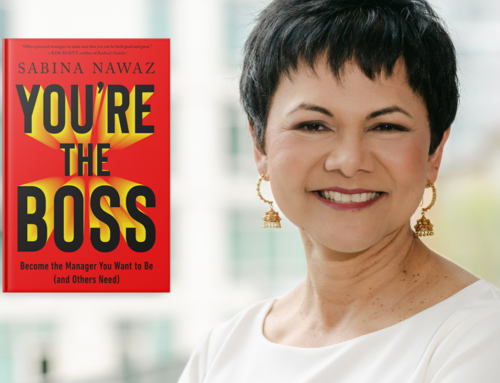I had the great pleasure of interviewing Drew Tarvin recently about his book, his work, and how he ended up proselytizing for humor in a very unfunny world. I was instantly on board with that! Here goes.
Nick: So, how did you get started? Take us back to your origin myth. Did it have something to do with Krypton and a space ship?
Drew: No. It was much more terrifying than that. I was in a business meeting, and terminally bored. I had to do something or die. The problem was I was leading the meeting. I started asking myself how to make meetings more fun.
Nick: Were you always funny?
Drew: No. I was an engineer. We don’t do funny. But my best friend in college forced me to join an improv group, and I discovered that I loved it. After college, I started working at Procter and Gamble, not a place known for being particularly amusing. So I started ending my emails with a joke as a way to force people to read all the way to the end of them. I was a project manager, and so it was natural for me to fear that they wouldn’t.
Nick: How did that work out for you?
Drew: For one status report, I forgot the joke at the end. I got a ton of replies asking where were the jokes? So I knew I was on to something. At least people were opening my emails and scrolling to the bottom!
Nick: You didn’t get any pushback? From the corporate powers-that-be, I mean?
Drew: No. I thought I would, but I didn’t. So after about a year, I proclaimed myself Corporate Humorist at P & G. No one ever stopped me!
Nick: Did you have any kind of self-policing going on?
Drew: I made sure my jokes were always rated “Mom” – meaning my Mom could read them and I’d still get invited to Thanksgiving. I made sure that my humor was always positive and inclusive. And I started an internal blog, and then started speaking internally to P & G employees about humor. I discovered that I loved it.
Nick: How did you finally achieve escape velocity from P & G?
Drew: I began Operation Leave Corporate America. I created a spreadsheet so that I could chart my progress and so that I would know when I had enough savings. I lived off ramen noodles and pizza and launched my humor business in July 2012.
Nick: Congratulations! And what does that business look like today?
Drew: I do speaking and training, company offsites, conferences, and workshops. I also have an online course. When I first started, it was more workshops than speaking; now, that’s reversed thanks to the TEDx talk and the book, which was published in April this year. I do a little consulting and one-on-one coaching as well – I can help almost anyone become funnier.
Humor is a skill that can be learned. And if you really don’t think you’re funny, you don’t have to be the creator of humor, you can be a conduit, and share it.
Nick: OK, can you give us your top five insights into using humor in the workplace?
Drew: First, humor is more broad than comedy – it’s not about becoming a standup comedian, but just making the workplace more fun;
Second, understand your humor “MAP” — Medium, Audience, Purpose – whether it’s in an email, or in person, you need to know your audience. What does your audience need, want, and know? What is your relationship to them? And why are you using humor? The engineer in me says be specific, have a purpose, such as to relieve stress, make a point memorable, or reduce tension;
Third, make sure your humor is appropriate. I don’t know anyone who has been fired for a bad joke, but I do know people who have been fired for an inappropriate joke;
Fourth, humor is a choice – funny people see the world in a funny way. Start by understanding what makes you laugh, and how you can be funny in both content and delivery, because it takes both. Always put the funny at the end: “Happiness is having a tight-knit, close family. In another city”;
Finally, think about humor having a specific goal – and be clear what that is.
In the book, I talk about both the why and how of humor in workplace. I have a total of ten humor strategies. And a bonus strategy: regardless of where you are, look for one smile per hour. That will simply add a little more fun to the day – and we can all use that.
Nick: Drew, thanks a million! How can people get more Drew if they want more?
Drew: They can go to Humorthatworks.com and drewtarvin.com for lots more information and resources. And I’m on Facebook, Twitter, and LinkedIn.
Nick: Thanks, Drew! Drew’s book is Humor that Works: The Missing Skill for Success and Happiness at Work. You can get it here!









Leave A Comment